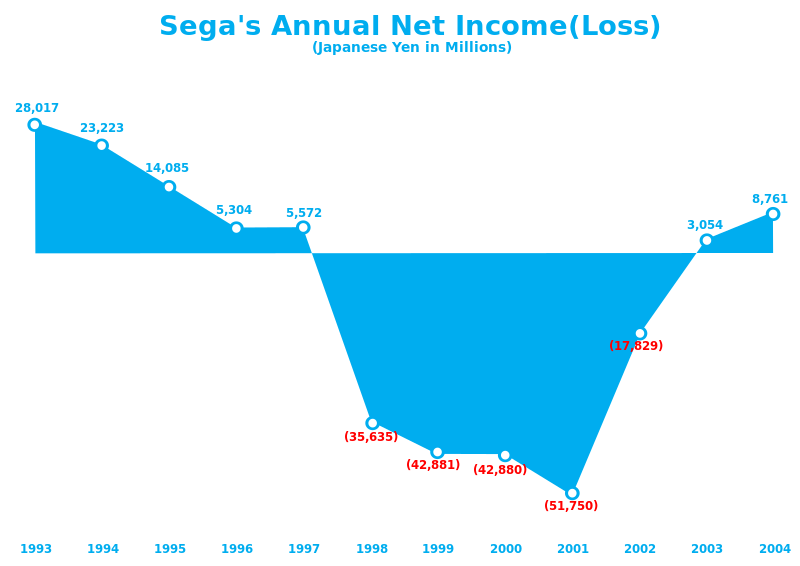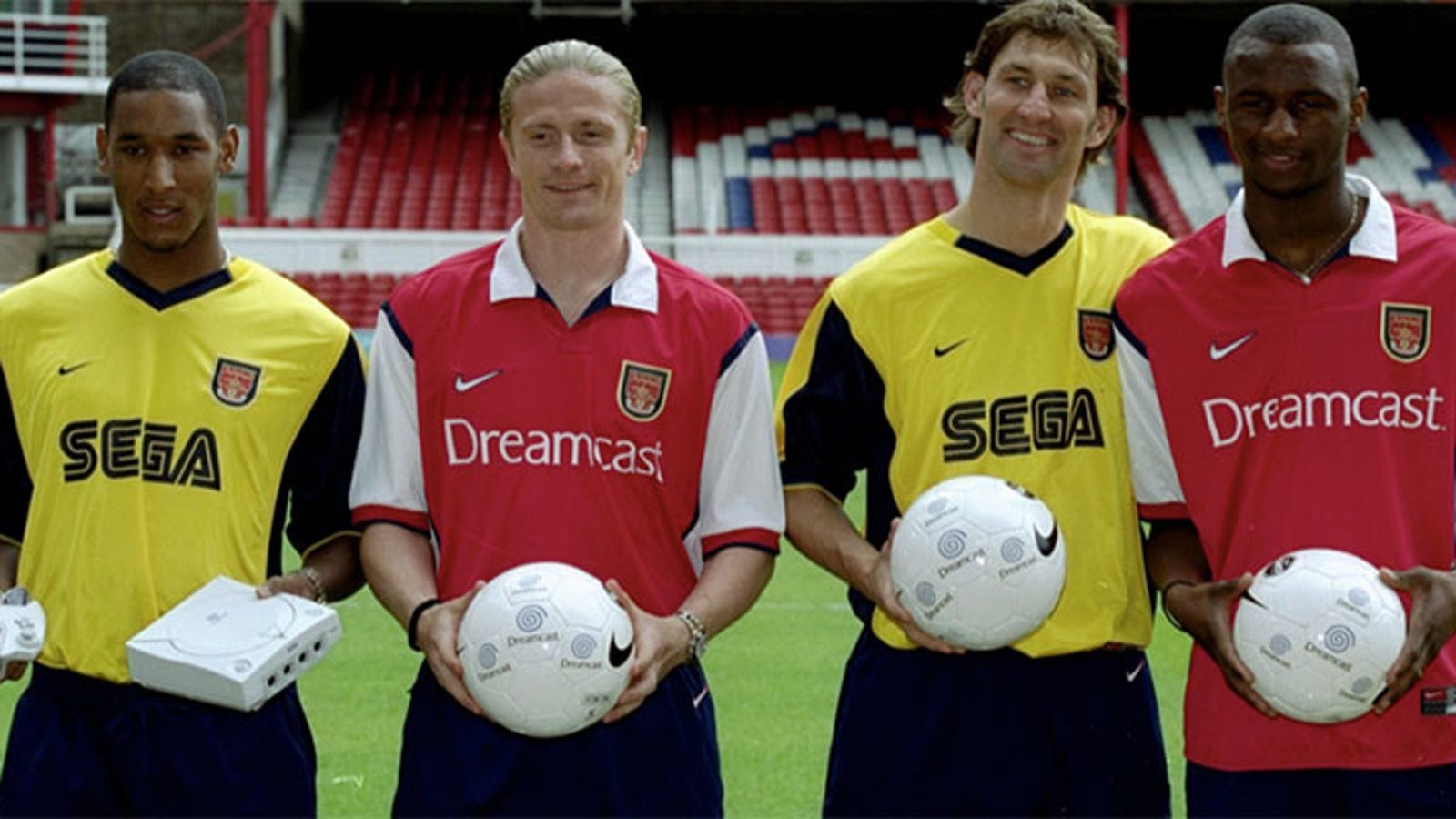Afro Republican
Banned
Many people have given reasons for why Sega ended up dropping out of the industry and things turning to shambles. But many people don't realize that Sega could have rode most of those reasons out if they had money. In fact the main reason why many of Sega's panic decisions happened is because they invested money into things that had no return in investment.
1. The Nomad was an expensive portable and was doomed from the start due to Sega fumbling the Genesis and it starting to collapse in sales in several parts of the world. Especially in NA, and it ended up being a failed investment. They didn't even try to salvage it.
2. The 32X was greenlit by both SOA and SOJ as a stop gap to counter the jaguar but they never added a lot of support or promoted the 32X well FORM THE START, which naver made sense, and basically had it over shadowed by the Saturn. This is the opposite of the Sega CD people like to commonly falsely blame for Sega's future problems.
3. A good chunk of 3D Sega arcade games flopped in the arcade across many of their machines.
4. The Model 3 was a ridiculous investment that Sega would not only not make their money back with, but in just two years realize they could make a cheaper and more powerful alternative. Which had to make some execs mad since the Model 3 was supposed to be some long lasting powerhouse. Even PC was starting to trade some advantages over it around 98. It wasn't as popular as the Model 2 and generally hurt Segas bottom line. The graphics looked good though at the time I'll admit, that doesn't pay the bills however.
5. The Saturn was made to be a 2D powerhouse with enough 3D to beat the Jaguar. On paper. However, Sega had slapped another VDP into the system once PSX (and 3DO to a lesser extend called "the Panasonic" in interviews") and people seem to forget that doing that raised the cost of the Saturn considerably. They were already in a range of not making much off the Saturn, but when the PSX and 3DO dropped prices and Sega had to drop the price they were taking hits.
6. DreamCast in NA took the place of the Saturn to stop the bleeding money with a successful launch. In japan Not only did the DC not have anywhere near as a successful launch. But the Saturn, which was doing well, was dialed back to push the DC in terms of full support. Effectively making the Saturn stop generating whatever profits it was getting in Japan and replacing it with losses.
7. Sega invested in several games to be the next Sonic in first party but it never happened. Late Genesis didn't have another big revenue generating franchise, same with late GG, when the Saturn came, it couldn't create another big franchise either. By the time the DreamCast came around it was too late. Sonic was basically, for consoles at least, the only "BIG" SEGA hit that was first party. (Outside VF in japan)
If Sega actually had money coming from somewhere, they could have taken the retailer issues, the SOA-SOJ infighting and other issues. The simple reason why Sega fell apart is because they threw money into thing without trying to find away to get a return back. they just wrote off bad plays like they had 400 billion in cash. They didn't and it showed. What's interesting is that most of the biggest mistakes were in the same time frame.
1. The Nomad was an expensive portable and was doomed from the start due to Sega fumbling the Genesis and it starting to collapse in sales in several parts of the world. Especially in NA, and it ended up being a failed investment. They didn't even try to salvage it.
2. The 32X was greenlit by both SOA and SOJ as a stop gap to counter the jaguar but they never added a lot of support or promoted the 32X well FORM THE START, which naver made sense, and basically had it over shadowed by the Saturn. This is the opposite of the Sega CD people like to commonly falsely blame for Sega's future problems.
3. A good chunk of 3D Sega arcade games flopped in the arcade across many of their machines.
4. The Model 3 was a ridiculous investment that Sega would not only not make their money back with, but in just two years realize they could make a cheaper and more powerful alternative. Which had to make some execs mad since the Model 3 was supposed to be some long lasting powerhouse. Even PC was starting to trade some advantages over it around 98. It wasn't as popular as the Model 2 and generally hurt Segas bottom line. The graphics looked good though at the time I'll admit, that doesn't pay the bills however.
5. The Saturn was made to be a 2D powerhouse with enough 3D to beat the Jaguar. On paper. However, Sega had slapped another VDP into the system once PSX (and 3DO to a lesser extend called "the Panasonic" in interviews") and people seem to forget that doing that raised the cost of the Saturn considerably. They were already in a range of not making much off the Saturn, but when the PSX and 3DO dropped prices and Sega had to drop the price they were taking hits.
6. DreamCast in NA took the place of the Saturn to stop the bleeding money with a successful launch. In japan Not only did the DC not have anywhere near as a successful launch. But the Saturn, which was doing well, was dialed back to push the DC in terms of full support. Effectively making the Saturn stop generating whatever profits it was getting in Japan and replacing it with losses.
7. Sega invested in several games to be the next Sonic in first party but it never happened. Late Genesis didn't have another big revenue generating franchise, same with late GG, when the Saturn came, it couldn't create another big franchise either. By the time the DreamCast came around it was too late. Sonic was basically, for consoles at least, the only "BIG" SEGA hit that was first party. (Outside VF in japan)
If Sega actually had money coming from somewhere, they could have taken the retailer issues, the SOA-SOJ infighting and other issues. The simple reason why Sega fell apart is because they threw money into thing without trying to find away to get a return back. they just wrote off bad plays like they had 400 billion in cash. They didn't and it showed. What's interesting is that most of the biggest mistakes were in the same time frame.



